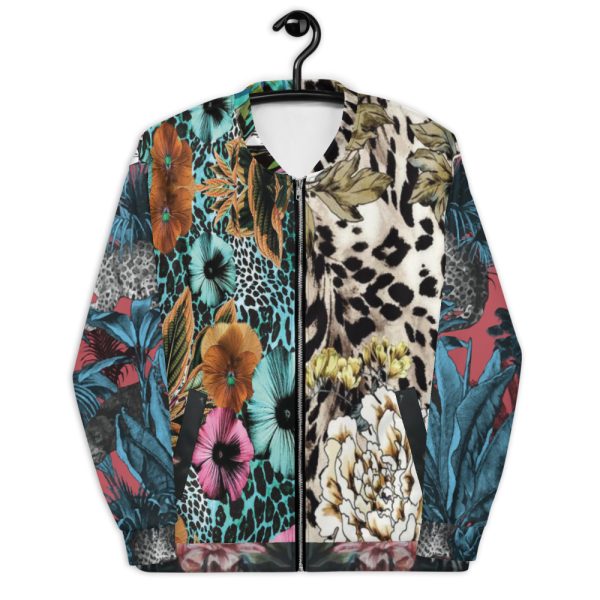Golf is a sport where the weather can change in an instant. From sunshine to a sudden downpour, it’s essential to be prepared for all conditions. A golf rain jacket is an excellent first line of defense against the elements, but how you layer it can make all the difference when it comes to comfort and performance. Proper layering ensures that you stay dry, warm (when necessary), and flexible, allowing you to focus on your game without the discomfort of overheating or getting chilled.
In this article, we’ll guide you on how to layer your golf rain jacket for maximum comfort, so you can play your best regardless of the weather.
1. Start with a Moisture-Wicking Base Layer
The foundation of a successful layering strategy starts with the base layer, the layer closest to your skin. For rainy or cool weather, moisture-wicking fabric is your best option because it helps keep sweat away from your body, keeping you dry and comfortable as you play.
- Materials to Look For: Polyester, merino wool, or nylon are all excellent moisture-wicking fabrics. These materials are designed to pull moisture away from your skin and spread it across the fabric’s surface, allowing it to evaporate quickly. Merino wool is especially good at regulating body temperature, keeping you warm in cooler conditions and cool when temperatures rise.
- Avoid Cotton: Cotton absorbs moisture and can leave you feeling soggy and chilled, which is a major drawback in unpredictable weather conditions like rain. Opt for synthetic or woolen fabrics for optimal moisture management.
The base layer serves as a protective barrier between your skin and the elements, ensuring that even if the weather turns stormy, you won’t be weighed down by excess moisture.
2. Choose a Breathable Mid-Layer for Flexibility
The mid-layer is typically worn over your base layer and under your golf rain jacket. It provides extra insulation and helps to regulate body temperature while still allowing for flexibility. This layer is key to staying comfortable in changing temperatures, especially when rain is accompanied by chilly winds.
- Insulating Fabrics: Fleece, lightweight down, or a synthetic jacket are popular options for the mid-layer. Fleece is lightweight, breathable, and offers warmth without adding bulk, making it ideal for layering under a golf rain jacket. Lightweight down or synthetic fill jackets provide warmth without the weight, keeping you comfortable even in cooler weather.
- Breathability is Key: Since golf is a physically demanding sport, you’ll want a mid-layer that allows for airflow to prevent overheating. Look for options with ventilation or moisture-wicking properties that keep you from feeling too hot as you swing and move around the course.
The mid-layer ensures that you remain warm when temperatures dip, but it’s important to keep it lightweight enough to maintain the flexibility you need for your golf swing.
3. Your Golf Rain Jacket: Waterproof Protection
The outer layer, your golf rain jacket, is the most crucial part of your layering system when it comes to staying dry in wet conditions. A high-quality rain jacket provides the waterproof protection you need, while also being breathable to prevent you from feeling clammy during your round.
- Waterproof Fabrics: Look for jackets made with Gore-Tex® or other high-performance waterproof materials. These fabrics create a barrier against rain while allowing sweat and excess heat to escape. Many golf rain jackets feature a DWR (Durable Water Repellent) coating, which helps water bead up and roll off the fabric, enhancing the jacket’s effectiveness in heavy rain.
- Breathable and Lightweight: Even the best waterproof jackets need to be breathable to avoid trapping moisture and heat inside. Choose a jacket with mesh or ventilated panels for maximum comfort, and consider one that is lightweight and easy to pack away when the weather clears.
A good golf rain jacket should offer both waterproofing and breathability, allowing you to stay dry without overheating. Look for adjustable features, such as hoods and cuffs, to keep rain from getting in.
4. Consider the Wind Factor with a Windbreaker Layer
While your rain jacket offers protection against the rain, wind can also be a challenge, particularly on open golf courses. A windbreaker layer can be added over your rain jacket for extra protection against gusts of wind that can lower your body temperature or affect your swing.
- Windbreaker Options: Many golf jackets are designed with windproof capabilities, but if you find yourself in particularly windy conditions, consider layering with a lightweight, packable windbreaker. These jackets are designed to block out wind without compromising breathability or comfort.
- Layering Over Your Rain Jacket: If wind protection is necessary, layering a windbreaker over your rain jacket can help keep you warm without feeling restricted. Look for a windbreaker that is light enough not to cause discomfort, but offers a shield against strong gusts.
Windproof layering ensures that even when the wind picks up, you stay warm, dry, and focused on your game.
5. Add Accessories for Extra Comfort
When layering for maximum comfort, don’t forget about the small details that can make a big difference. Accessories like hats, gloves, and scarves can help keep you comfortable when playing in the rain or cold.
- Hats and Hoods: A waterproof hat or the hood of your rain jacket can keep water from running down your face. Look for a hood with adjustable drawstrings, so you can tighten it to stay dry while maintaining good visibility.
- Gloves: Golf gloves designed for wet conditions can help you maintain a solid grip on your club, preventing slippage when it’s raining. Waterproof gloves are also an excellent option for keeping your hands dry and warm.
- Neck Gaiters or Scarves: These are helpful for keeping rain and wind off your neck, where cold gusts or water can make you feel uncomfortable during your round.
Small accessories can make a huge difference in maintaining warmth and comfort, and they’re easy to add or remove based on changing conditions.
6. Adjusting Layers Based on Weather Conditions
The beauty of layering is that it allows you to adjust based on changing weather conditions. Golf courses can be exposed to a wide range of weather patterns throughout a round, so being able to add or remove layers as needed can help you stay comfortable.
- Hot and Humid Conditions: If you find yourself playing in warm, rainy conditions, you might want to wear only a lightweight base layer and your rain jacket. As long as your jacket is breathable, this combination will keep you dry without overheating.
- Cold and Windy Conditions: For cooler, windier days, consider adding a heavier mid-layer such as fleece or a thin insulated jacket under your rain jacket. In very cold conditions, a thermal base layer might be necessary for extra warmth.
By adjusting your layers, you can stay comfortable in a variety of weather conditions, allowing you to focus on your game without worrying about how you’re dressed.
Conclusion: Layering for Golf Rain Jacket Comfort
Properly layering your golf rain jacket can make all the difference when it comes to staying dry, warm, and comfortable during your round. The key is to start with moisture-wicking base layers, add an insulating mid-layer for warmth when needed, and finish with a waterproof outer layer that shields you from rain and wind. Don’t forget to choose breathable fabrics and flexible options to ensure comfort and mobility throughout your game. With the right layering system, you’ll be prepared to tackle any weather condition while keeping your focus where it belongs—on your golf game.
-
 Satin Designer Bomber Jacket$448
Satin Designer Bomber Jacket$448 -
 Satin Designer Bomber Jacket$448
Satin Designer Bomber Jacket$448 -
 Bomber Jacket | Designer Luxury For Women & Men | Navy Blue Floral Red Turquoise$158
Bomber Jacket | Designer Luxury For Women & Men | Navy Blue Floral Red Turquoise$158 -
 Bomber Jacket | Designer Luxury For Women & Men | White Gold$158
Bomber Jacket | Designer Luxury For Women & Men | White Gold$158 -
 Bomber Jacket | Designer Luxury For Women & Men | Floral White Black$158
Bomber Jacket | Designer Luxury For Women & Men | Floral White Black$158 -
 Bomber Jacket | Designer Luxury For Women & Men | Blue Purple Gold$158
Bomber Jacket | Designer Luxury For Women & Men | Blue Purple Gold$158 -
 Bomber Jacket | Designer Luxury For Men & Women | Black Gold Baroque$158
Bomber Jacket | Designer Luxury For Men & Women | Black Gold Baroque$158 -
 Bomber Jacket | Designer Luxury For Women & Men | Black Gold$158
Bomber Jacket | Designer Luxury For Women & Men | Black Gold$158 -
 Bomber Jacket | Designer Luxury For Women & Men | Gold$158
Bomber Jacket | Designer Luxury For Women & Men | Gold$158